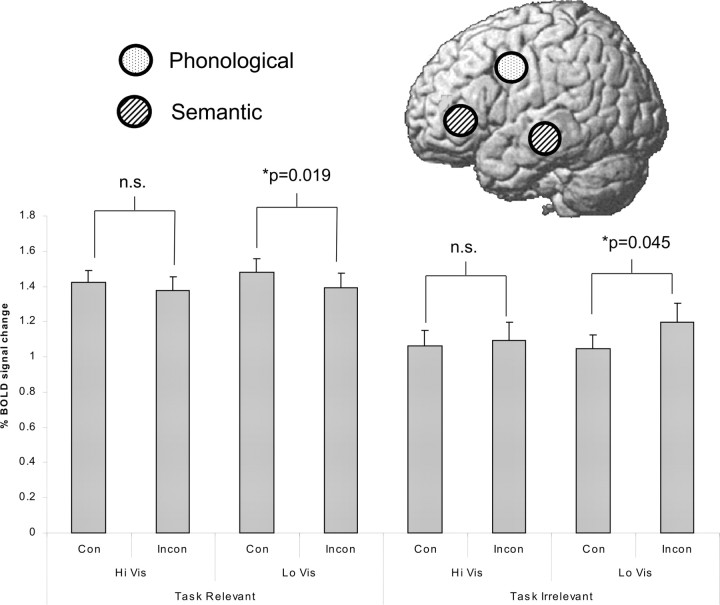Figure 3.
Neural activity associated with priming. Data were extracted from the brain areas that were previously found to be associated with the Phonological task (left ventral premotor area) and the Semantic task (left inferior frontal cortex and middle temporal gyrus). The location of these is schematically illustrated on the brain above. Here, task relevant means activity from the Semantic areas when the volunteers were instructed to perform the Semantic task, and activity from the Phonological areas when they were instructed to perform the Phonological task. Task irrelevant means the activity was extracted from the alternative areas, which was more important for the primed task than the instructed task. When the visibility of the primes was low (LoVis), which means the priming effect was strongest (see Fig. 2), activity in task-relevant areas was significantly reduced (p = 0.019), and activity in task-irrelevant areas was significantly increased (p = 0.045). This suggests that the volunteers were actually engaged in exercising the wrong neural circuits when they were primed to perform the wrong task. This effect is not present when the visibility of the primes was high (HiVis), suggesting that this effect could not be attributable to the degree of conscious perception of the prime. This is reflected by a three-way interaction between Task Relevance (i.e., activity in task relevant areas vs activity in task irrelevant areas), Congruency (Con; between prime and instruction), and Visibility (of the prime) (p = 0.040). InCon, Incongruency; n.s., not significant.

